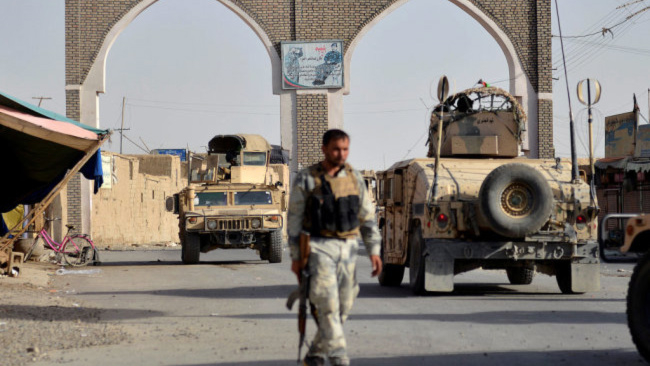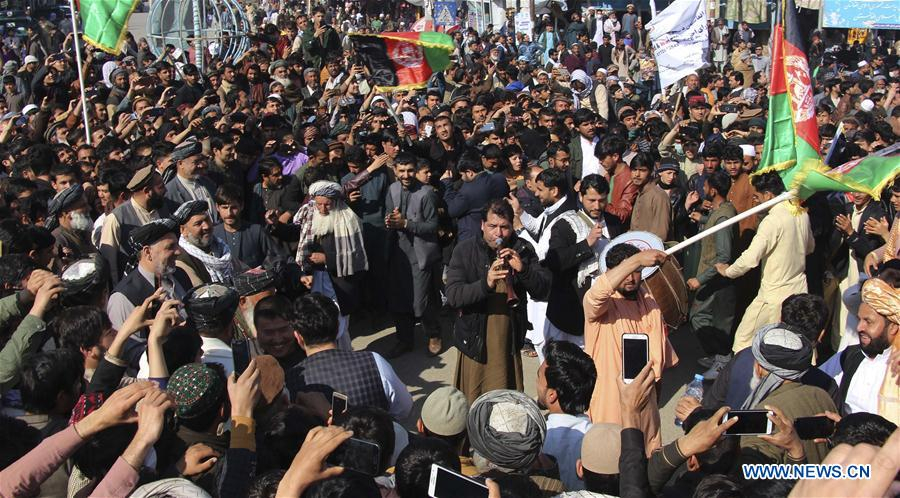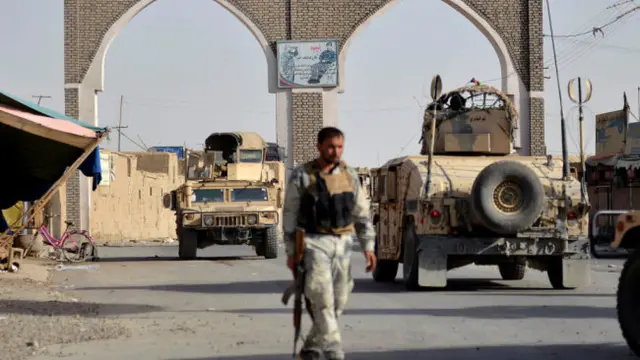
Editor's note : Richard N. Haass is the president of the Council on Foreign Relations. His next book, "The World: A Brief Introduction," is due out in May. The article reflects the author's opinions, and not necessarily the views of CGTN**.**
After nearly two decades, 2,400 soldiers killed, another 20,000 wounded, and as much as 2 trillion U.S. dollars spent, the United States is understandably eager to withdraw from Afghanistan. President Donald Trump wants to be able to claim in advance of the November 2020 election that he fulfilled his campaign promise to end the country's longest war, and his Democratic challengers share his desire to extricate the U.S. from the conflict.
Toward that end, following a one-week period of relative calm, the U.S. and the Taliban – the "students" whose Sunni fundamentalist political and military movement has been fighting for power or ruling Afghanistan for a quarter-century – signed an accord. One imagines it took as much time to settle on what to call the pact as on any of its provisions: It is the "Agreement for Bringing Peace to Afghanistan between the Islamic Emirate of Afghanistan which is not recognized by the United States as a state and is known as the Taliban and the United States of America."
As the accord's name suggests, the government of Afghanistan is not a party to it, although the agreement does call for a political dialogue between the government and the Taliban to start by March 10. The agenda for this intra-Afghan dialogue includes arranging for a permanent and comprehensive cease-fire as well as "The completion and agreement over the future political roadmap" of the country. No details about a roadmap are set forth.
The agreement mostly details two sets of commitments. The U.S. has pledged to withdraw one-third of its approximately 13,000 troops in 135 days, and the remaining 8,600 before the end of April 2021. America's coalition partners would withdraw their troops by then as well. The U.S. further agreed to withdraw all "private security contractors, trainers, [and] advisers" from the country and work toward removing sanctions on the Taliban and releasing Taliban prisoners.

Local people celebrate the peace agreement between the U.S. and the Taliban in Kunduz City, Afghanistan, March 2, 2020. /Xinhua
For its part, the Taliban is committed to doing all it can to ensure that terrorist organizations do not use Afghan territory to target the U.S. or its allies. The Taliban also agreed not to cooperate with or support individuals associated with such groups, including Al-Qaeda, which was based in Afghanistan when the Taliban were in power and used the country to train those responsible for the September 11, 2001, attacks on the U.S. that killed nearly 3,000 people. The Taliban did not agree, however, to any limits on their military capabilities now or in the future. Nor did they agree to recognize the legitimacy of Afghanistan's current government.
The accord is ambitious, in the hope that political arrangements can be sorted out before the called-for withdrawal of American troops. With respect to elections, power-sharing, a constitution, and the role of religion and the rights of women within Afghan society, the agreement is silent.
It is also worth noting that the Afghan government in recent days has raised questions about its preparedness to release 5,000 Taliban prisoners. More important, the relative calm already has been broken by renewed Taliban armed attacks. None of this bodes well for the future of the agreement.
But whatever happens from this point on, it is essential that the U.S. sign a separate pact with Afghanistan's government. It is essential that that agreement specifies what criteria must be met and what conditions must exist before U.S. troop withdrawals would proceed. And it is essential that the U.S. promise to provide the Afghan government with long-term economic, diplomatic, intelligence, and military support – something unfortunately made more difficult by the commitment to the Taliban to withdraw all advisers from the country.
Such a side agreement would constitute a hedge against the all-too-real possibility that the Taliban's pledges are tactical, designed to bring about America's military withdrawal rather than peace or an end to terrorism. A commitment to the Afghan government would also reassure its leaders and citizens that they were not being abandoned like the Kurds in Syria. America's friends and allies everywhere would welcome such a commitment.
In an ideal world, the U.S. would also require that the Taliban end their use of Pakistani territory as a military sanctuary. The problem with this and other sensible demands is that the U.S. has done much to weaken its own leverage with the Taliban by its obvious desire to end its military presence in Afghanistan.
It is possible that calm in Afghanistan can be restored nonetheless, that intra-Afghan talks bear fruit, and that a cease-fire materializes. This would of course be welcome. But it is more likely that the U.S.-Taliban agreement to bring peace to Afghanistan does nothing of the sort. In that case, the U.S. and its coalition partners would be wise to fall back on a strategy that protects their core interests, above all ensuring that Afghanistan does not once again become a haven for terrorists planning and carrying out attacks against the West.
Such a strategy would require keeping several thousand troops in the country to continue to build and train the Afghan security forces and to conduct select counter terrorism missions. For some, this would be too expensive. But, given what is at stake, it would be a price worth paying. It would not end the "forever war" that has been Afghanistan; but nor, almost certainly, will the just-signed agreement.
Copyright:
Project Syndicate
, 2020.
(If you want to contribute and have specific expertise, please contact us at [email protected].)
 简体中文
简体中文

